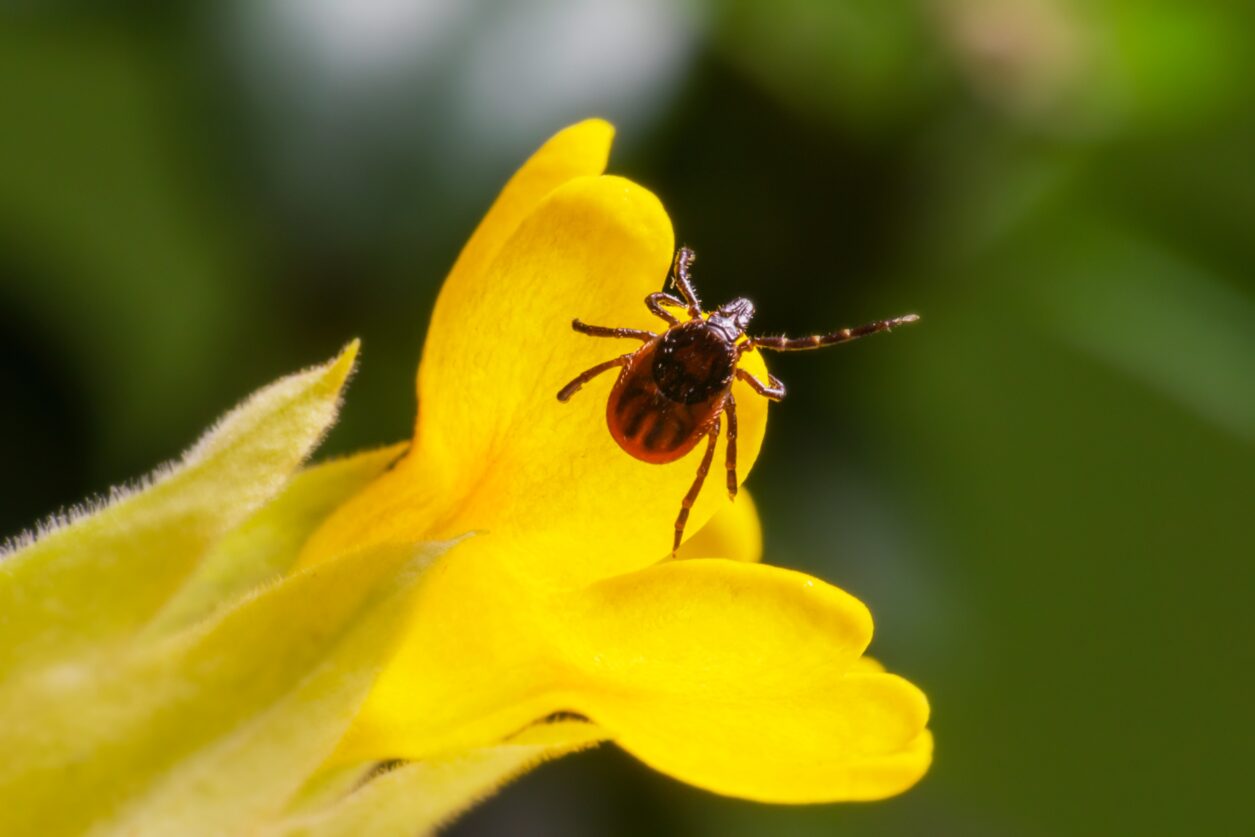Although a tick can bite you at any time, tick season is at its worst from April to October. Ticks are those annoying pests that can latch onto you or your pet’s skin and can spread diseases. When most people think about ticks they typically worry about Lyme disease, but there are many other tick-borne diseases to be aware of during this tick season.
Disease Spreading Ticks
Deer ticks are the most recognized ticks that carry Lyme disease, however, there are at least seven known tick species in the United States that can spread disease.These include: the American dog tick (wood tick), which transmits Tularemia and Rocky Mountain spotted fever; the Lone star tick (turkey tick), which transmits bacteria that cause Ehrlichiosis, Tularemia and STARI; the Gulf Coast tick, which transmits Rickettsioses; the Brown dog tick (kennel tick), which transmits Rocky Mountain spotted fever; the Western black-legged tick, which transmits Lyme disease and Anaplasmosis; and the Rocky Mountain wood tick, which transmits Rocky Mountain spotted fever, Colorado tick fever and Tularemia.
Generally, tick populations tend to be in higher elevations and in wooded and grassy areas where the creatures they feed on live and roam, including: deer, rabbits, birds, lizards, squirrels, mice, and other rodents. Ticks can also be found in urban areas, beaches and coastal areas.
Signs of Tick Bites
Most people do not even know they have been infected by a tick because the symptoms are so similar to virus-like symptoms, or even respiratory ailments, so if you are experiencing headaches, fever, fatigue, chills, and muscle aches, this could be a sign that you might have been bitten by a tick. Symptoms can vary from person to person and for some people symptoms may not even show up for weeks, so it is important to check for ticks after being outdoors.
Ticks will attach easily to bare skin, so wearing long sleeves and pants will help protect you, but you should still check clothing to make sure you are not bringing ticks in your home. After being outside, always check your skin and your pet’s skin for ticks. You should also shower right after coming home, check for ticks on body, gear, and pets, and tumble dry clothes on high heat for 10 minutes to kill any ticks.
Tick Removal and Testing
Finding a tick on your skin is step one and something you can do yourself, but knowing what the species of tick is requires species identification and testing. This is why having a tick test and sample collection kit can be useful. Purchase a tick kit in advance as a precaution so you have it on hand if you do find a tick. A tick test and sample collection kit should include tweezers, easy directions on how to remove a tick and safe packaging for the tick to be mailed into the lab for testing. Once at the lab, the tick’s DNA is extracted to first identify the species, then tested for the different pathogens it may carry. Knowing the species of tick that bit you will help your doctor or veterinarian develop a better plan of action for treatment.
Ticks should be removed properly in order to prevent the spread of disease. Many times people get nervous and do not remove the tick properly.
Three easy steps to remember if you encounter a tick so that you can
quickly remove it safely include:
- Use fine-tipped tweezers to grasp the tick as close to the skin’s surface as possible.
- Pull the tick upward with steady, even pressure. Twisting or jerking the skin can cause the mouth parts to break off and remain in the skin.
- Thoroughly clean and disinfect the bite area and your hands with rubbing alcohol, an iodine scrub, or soap and water.
Do not ever burn the tick off the skin or squeeze the tick. Doing so can result in injury, and can cause the tick to expel its contents and increase risk of disease transmission. Also, do not use tape, antibiotic ointment, alcohol or Vaseline to remove the tick. Additionally, do not freeze the tick as this can cause the tick to expel its contents and increase risk of disease transmission, or damage the sample.
After you remove the tick, be sure to monitor the affected area for signs of infection or rashes. If tenderness or pain develops, seek medical attention immediately.
If your tick tests positive for Lyme disease or another disease, it does not mean that you have Lyme disease too. If you take action quickly, remove the tick properly and make a doctor’s appointment immediately upon sending your tick in for testing to a lab, you can potentially avoid a life-long illness that can severely affect your quality of life. For more tips and instructional videos to be sure about the tick that bit you, visit www.ticksure.com.
Sandra Lee is CEO of NJ Labs, a nationally recognized provider and advocate for quality in chemistry and microbiology testing that serves the pharmaceutical, nutraceutical, dietary supplement, cosmetic, and cannabis/CBD industries. As a scientist and one of the few female CEOs in the analytical testing industry, she has a passion for chemistry and how it influences multiple aspects of our daily lives. At NJ Labs she leads the privately owned FDA and DEA inspected facility that has been a mainstay in the testing industry for 85 years with a certified full-service contract analytical testing laboratory that follows strict Current Good Manufacturing Practice (CGMP) regulations and holds ISO/IEC 17025:2017 accreditation. She also hosts the “Going Beyond Testing” podcast series to help companies and consumers get an insider’s look at testing practices and what should be tested to keep products safe and effective. Lee is a graduate of the University of Michigan where she holds a Bachelor of Science degree in Chemistry.

















